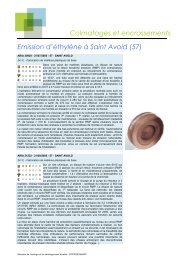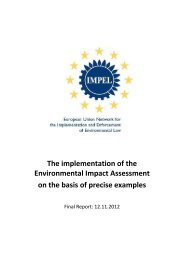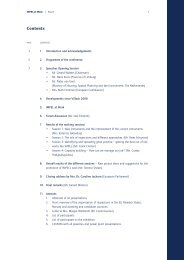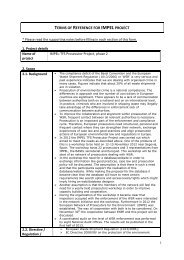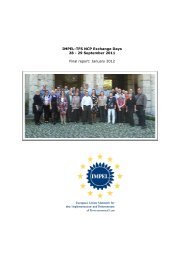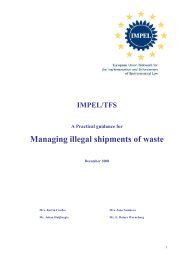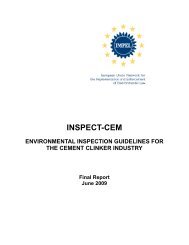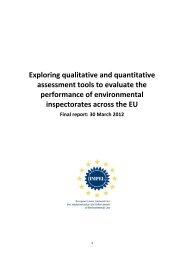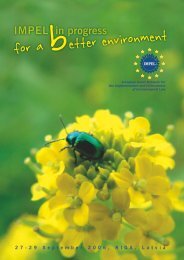2009-09 - IRI Portugal - FINAL REPORT - IMPEL
2009-09 - IRI Portugal - FINAL REPORT - IMPEL
2009-09 - IRI Portugal - FINAL REPORT - IMPEL
You also want an ePaper? Increase the reach of your titles
YUMPU automatically turns print PDFs into web optimized ePapers that Google loves.
4. Summary of Findings<br />
Good practice<br />
The review team considers the following issues as good practice. In each section they<br />
are ranked in the order in which the review team consider to be important:<br />
Part A<br />
Regulatory framework<br />
1. In the case of waste water IGAOT has the ability to charge the expenses of<br />
inspection work to the operator in cases where there is no permit or in cases<br />
where there is a breach of a condition in the permit. A methodology is developed<br />
to calculate these expenses.<br />
2. When IGAOT issues a fine, a percentage of the collected fine goes to the<br />
Environmental Intervention Fund in case remediation of the site is necessary<br />
when a facility closes and there are no other financial or legal means to do it.<br />
3. IGAOT uses <strong>IMPEL</strong> projects like Doing The Right Thing and bi-lateral cooperation<br />
with other EU member states (e.g. with the Netherlands) for the development of<br />
their organisation.<br />
4. When there is a lack of guidelines or norms in <strong>Portugal</strong>, IGAOT uses limit values<br />
from other countries (e.g. soil and groundwater limit values from Canadian and<br />
Dutch)<br />
Part C<br />
Describing the context<br />
1. IGAOT uses a Geographic Information System (GIS) for analysing, planning and<br />
prioritising inspections activities. The way information is gathered and used<br />
through GIS makes this a very strong tool.<br />
2. IGAOT makes use of information from partner organisations to prioritise her<br />
work. For example the information from the E-PRTR database of the APA is used<br />
for the Risk Assessment tool of IGAOT.<br />
Setting priorities<br />
1. IGAOT developed an excellent and flexible risk assessment tool. The<br />
improvements that have been made in the tool are registered and have the<br />
formal approval of high level management.<br />
2. The Risk Assessment tool is continuously updated after each IPPC inspection and<br />
through the E-PRTR report from the APA.<br />
3. IGAOT uses creative solutions for human resource challenges. For example, the<br />
use of students to assist in the implementation of the risk assessment tool.<br />
32



